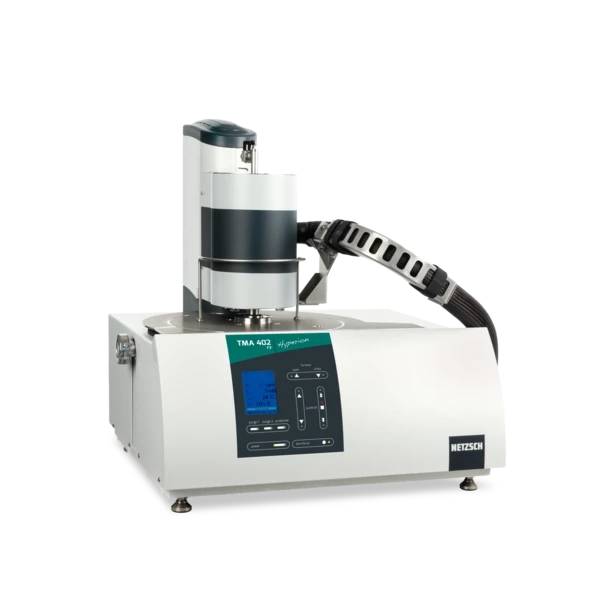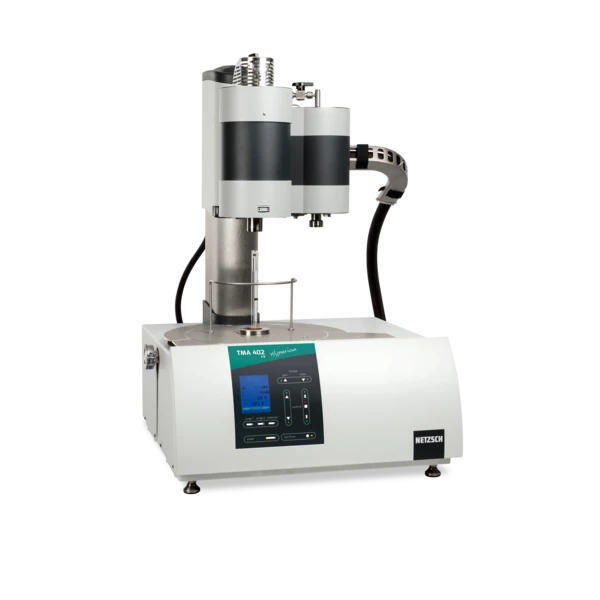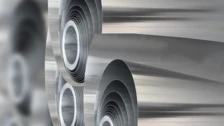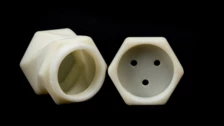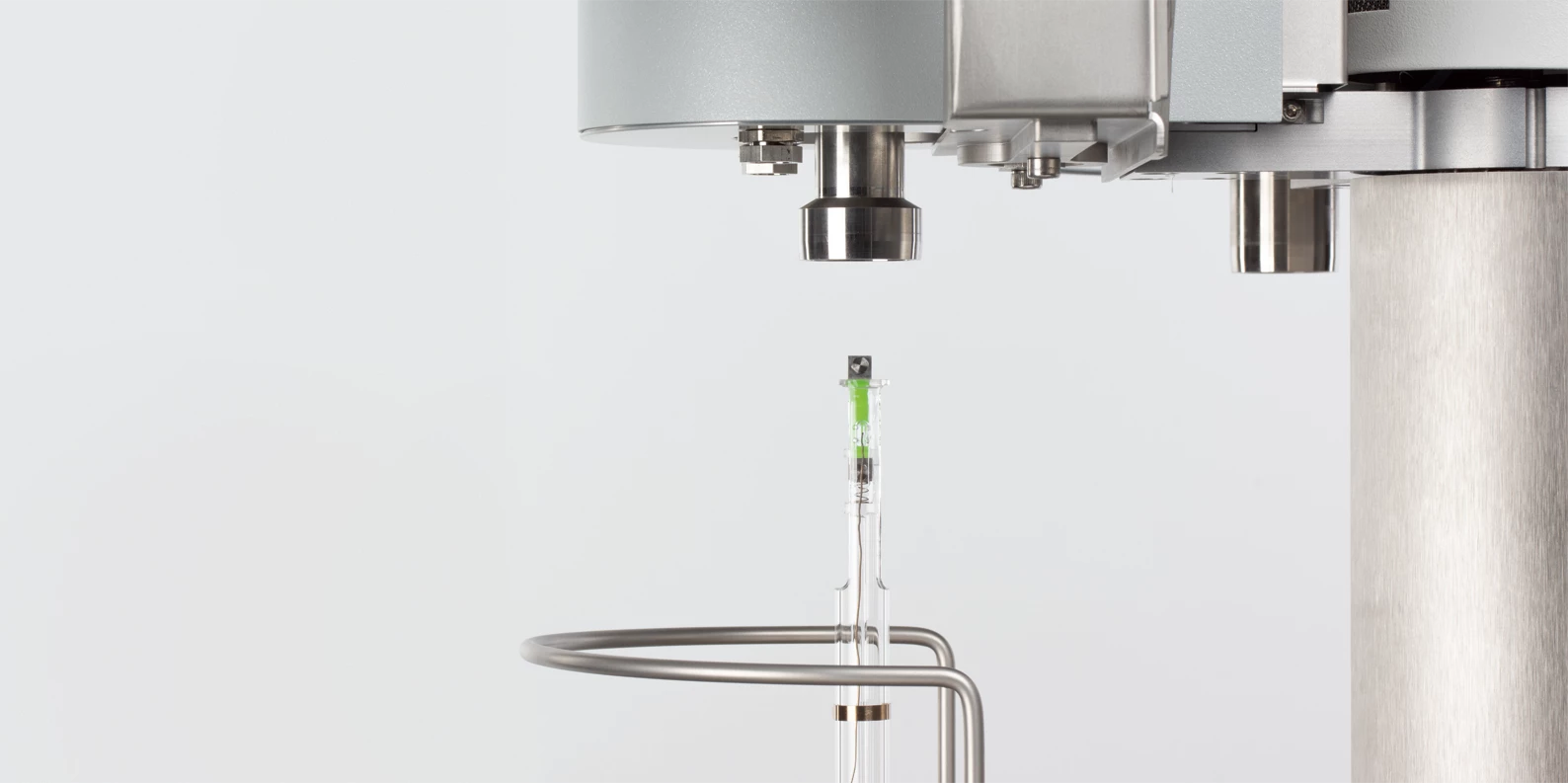
TMA
Thermomechanical Analysis
For measuring both the thermal and the mechanical properties, a thermomechanical analyzer (TMA) is used. Temperature-dependent dimensional changes in solids, liquids and pastes determine the suitability of an application for a given material or provide information about the composition, structure and conditions of processing.
Many materials undergo changes of their thermomechanical properties during heating or cooling. For example, phase changes, SinteringSintering is a production process for forming a mechanically strong body out of a ceramic or metallic powder. sintering steps or softening can occur in addition to thermal expansion.
TMA analyses can hereby provide valuable insight into the composition, structure, production conditions or application possibilities for various materials. The application range of instruments for thermomechanical analysis extends from quality control to research and development. Typical domains include plastics and elastomers, paints and dyes, adhesives, films and fibers, ceramics, glass, metals, and composite materials.
Thermomechanical Analysis (TMA) determines dimensional changes of solids, liquids or pasty materials as a function of temperature and/or time under a defined mechanical force (DIN 51005, ASTM E831, ASTM D696, ASTM D3386, ISO 11359 – Parts 1 to 3). It is closely related to Dilatometry (vertical dilatometer), which determines the length change of samples under negligible load (e.g., DIN 51045).
Besides the linear thermal expansion and the coefficient of thermal expansion, TMA can also be used to study Phase TransitionsThe term phase transition (or phase change) is most commonly used to describe transitions between the solid, liquid and gaseous states.phase transition temperatures, SinteringSintering is a production process for forming a mechanically strong body out of a ceramic or metallic powder. sintering temperatures, shrinkage steps, Glass Transition TemperatureThe glass transition is one of the most important properties of amorphous and semi-crystalline materials, e.g., inorganic glasses, amorphous metals, polymers, pharmaceuticals and food ingredients, etc., and describes the temperature region where the mechanical properties of the materials change from hard and brittle to more soft, deformable or rubbery.glass transition temperatures, dilatometric softening points, Volumetric ExpansionThe volume of a gas, solid or liquid changes if the temperature, the pressure or the forces acting on that gas/solid/liquid change. In the case of thermal analysis, we are looking at temperature-dependent changes.volumetric expansion, DensityThe mass density is defined as the ratio between mass and volume. density changes, delamination and SinteringSintering is a production process for forming a mechanically strong body out of a ceramic or metallic powder. sintering kinetics.
TMA 402 F3 Hyperion® Polymer Edition
Thermomechanical Analysis – TMA - Tailor-Made for Low-Temperature Applications
Polymers undergo changes in their thermomechanical properties during heating and cooling. TMA analyses can give insights into molecular orientation and quenching effects during cooling. It allows the design of adhesives and other hybrid joints and quality control of shrink films.
TMA 402 F1 /F3 Hyperion®
Thermomechanical Analyzer - Vertical Dilatometer
Modular Concept with interchangeable furnaces (compatible with other NETZSCH instruments) for easy and cost-effective expansion and retrofitting.Gas flows with up to 4 MFCs, controllable via software with programmable atmosphere change for the analysis of e.g. OxidationOxidation can describe different processes in the context of thermal analysis.Oxidation behavior without manual valve operation
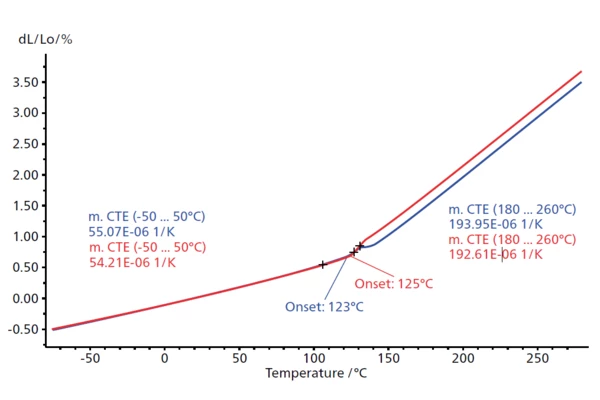
Thermal Expansion
The linear thermal expansion is an important variable for assessing the dimensional behavior of a material in response to a change in temperature.
This plot shows the thermal expansion (dL/L0 in %) of an epoxy resin between -70°C and 270°C. In the first heating (blue curve), the onset of the Glass Transition TemperatureThe glass transition is one of the most important properties of amorphous and semi-crystalline materials, e.g., inorganic glasses, amorphous metals, polymers, pharmaceuticals and food ingredients, etc., and describes the temperature region where the mechanical properties of the materials change from hard and brittle to more soft, deformable or rubbery.glass transition (Tg) occurs at 123°C. In the second heating (red curve), the onset of Tg is slightly shifted, to 125°C. This shift could be due to RelaxationWhen a constant strain is applied to a rubber compound, the force necessary to maintain that strain is not constant but decreases with time; this behavior is known as stress relaxation. The process responsible for stress relaxation can be physical or chemical, and under normal conditions, both will occur at the same time. relaxation effects or post-Curing (Crosslinking Reactions)Literally translated, the term “crosslinking“ means “cross networking”. In the chemical context, it is used for reactions in which molecules are linked together by introducing covalent bonds and forming three-dimensional networks.curing.
Application Literature
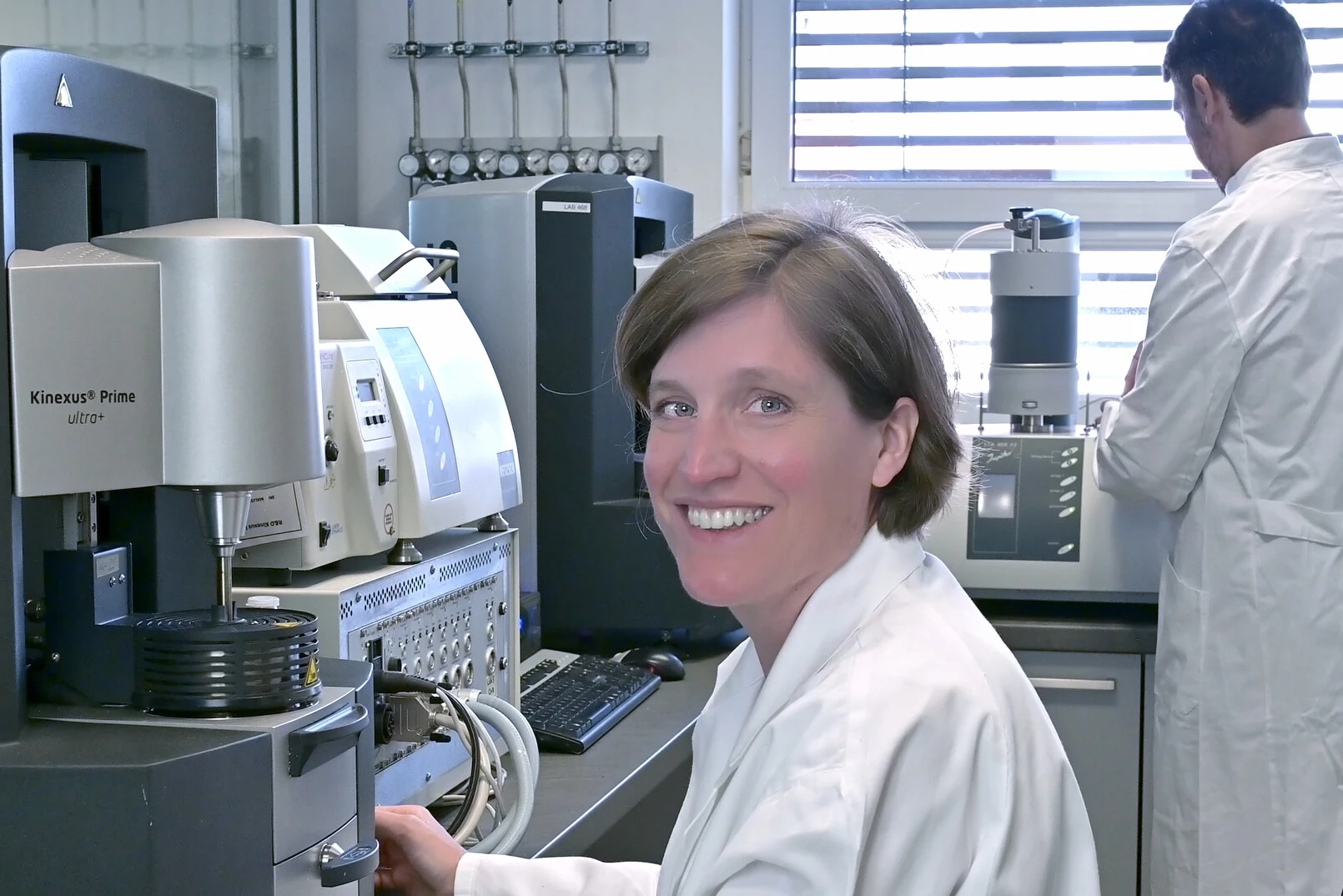
MEASUREMENT WANTED?
Our NETZSCH applications laboratory is providing contract testing services for a wide range of industries and research centers. It is equipped with state-of-the-art testing instruments allowing for a variety of thermal analysis measurements to be carried out.
Consult with the experts in our applications labs to choose the best-suited measuring method for your specific needs.
